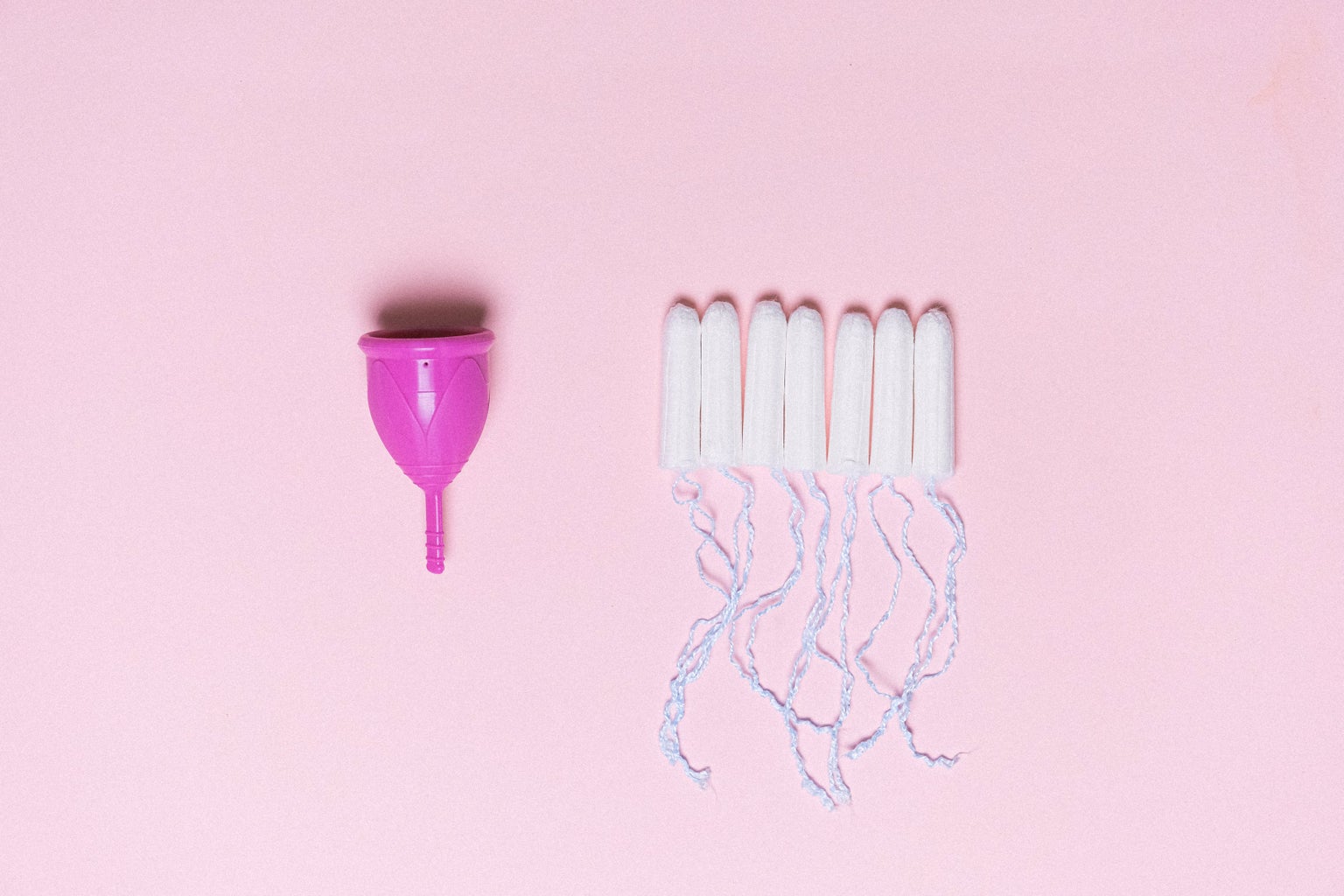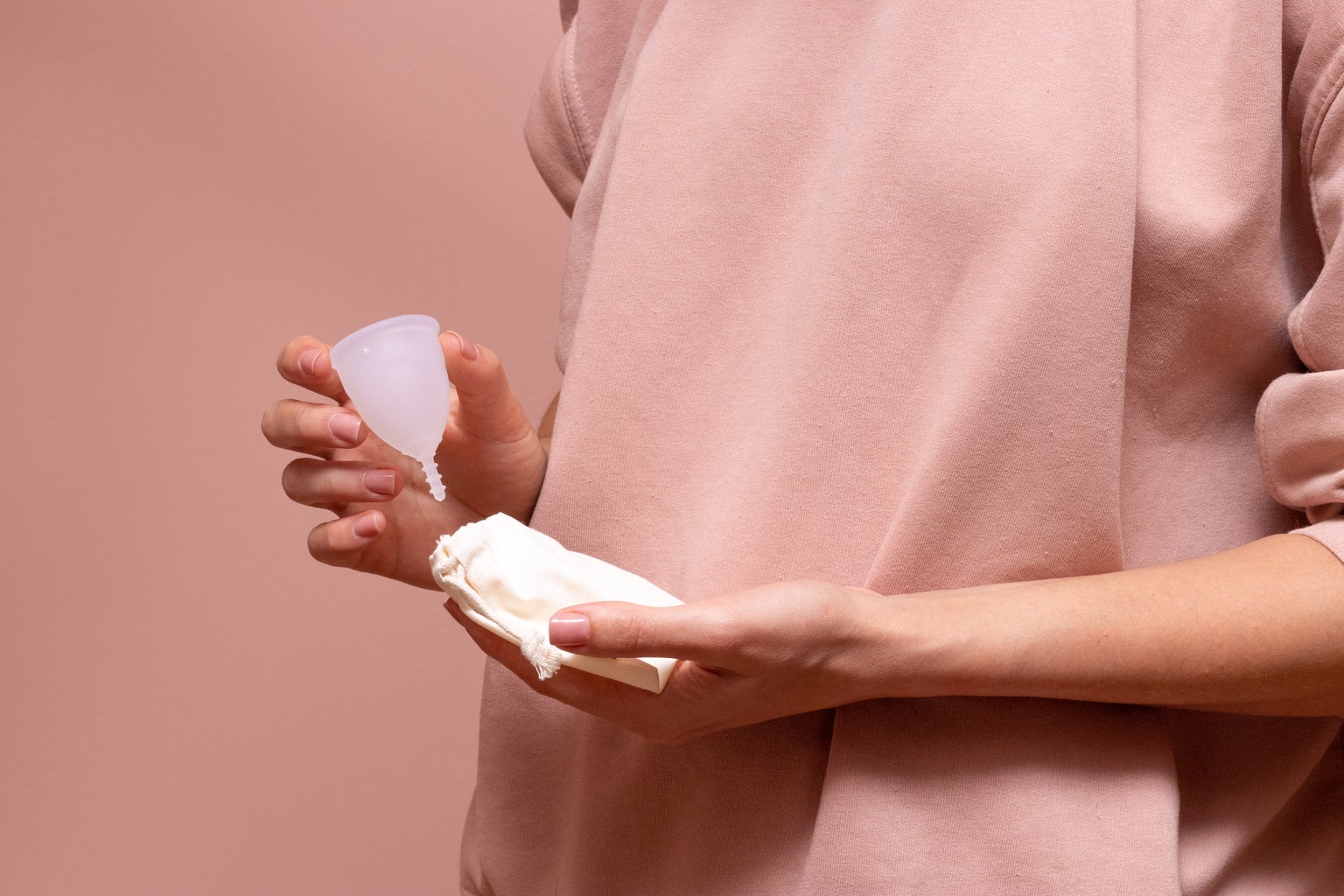I started using a menstrual cup about three months ago, and it’s the best decision I’ve made for my body, my wallet and for my conscience. There is a lot of stigma surrounding menstrual cups. From whether or not it’s sanitary to convenience, there’s a lot of things that held me back from investing in a menstrual cup when I first heard about it. As a woman, I feel obligated to share my experience, so that when you are questioning if it’s the right fit for you, you have all of the facts.
The Pros
One unexpected pro of switching to a menstrual cup was how comfortable it was compared to pads or tampons. Pads were always uncomfortable for me because I was constantly aware that they were there. If you’ve ever worn a pad, I’m sure you know what I mean. To make things worse, I was convinced that people could smell/see that I was wearing a pad throughout the day. I had a heavy flow growing up, so I often had to switch out my pad every two hours on the first half of my period. Tampons were slightly better, but I had constant anxiety that I would be spotting throughout the day and not notice. I also noticed that tampons had a certain stiffness when I first inserted them. When I switched to the menstrual cup, I immediately noticed that it lacked the rigidity and was much more comfortable. Most times, I forgot that it was even there. I have never had a leak while using a menstrual cup, because it works through suction, not absorption like tampons and pads. To this day, the lack of leaking and the comfortable aspect are one of the main reasons I wear a menstrual cup!
Menstrual cups are also much more economical. Menstrual cups can be used for up to five years and the one that I use currently retails for $8, plus shipping and handling. According to The Huffington Post, “70 percent of women who use tampons go through about twenty per menstrual cycle” and that the average price of tampons is about $7 for a box of 36 tampons. This means that in about two cycles I’ve already saved money by switching. Another bonus is that by using a menstrual cup, you also help the planet by not using twenty pads/tampons each cycle that will eventually have to decompose.
If you haven’t been convinced already, menstrual cups can also be better for your health. In comparison to tampons, menstrual cups have a lower risk of contracting Toxic Shock Syndrome (TSS). They are also made of 100% silicone, so it’s safe to put into your vagina without having to worry about introducing chemicals, fragrances, or bleaches into your vagina and mess up your pH system. Menstrual cups are safe to wear up to 12 hours, and can hold up to 18-36 ml of fluid (depending on the size), which means that you can sleep in it without having to worry about changing it throughout the night.
Now you may be thinking…
Can I use a menstrual cup if I have an IUD? Consider me walking proof that you can! Just be careful to break the suction before you pull it out. As a note, all menstrual cup users should follow this rule!
How do I change it in public? The ability to change your menstrual cup every 12 hours has pretty much prevented me from needing to switch out my cup in public; however, you can do so if you have to! You just release the suction, pull it out, dump it, and reinsert it! You can wipe your fingers off with some toilet paper and then wash your hands when you get out of the stall… no one will ever know!
Is it clean to use a menstrual cup? Yes! In between cycles, you are supposed to wash and boil the cup for 5 minutes to make sure that it’s sterilized. You should also wash your hands before and after you plan on switching your menstrual cup, but it’s not any more “dirty” than other menstrual products. There are even menstrual cup washes ($12) and menstrual cup sanitizers ($9) that you can use (but they are not necessary)!
What if it doesn’t fit? Menstrual cups work with many different types of vagina shapes and sizes. Whether you’ve given birth, have a tilted vagina, or have a particularly petite frame, there is a menstrual cup out there for you! The only instance that I have heard of a menstrual cup not being recommended is if you have had a bladder or pelvic floor prolapse. Menstrual cups come in different sizes (for those who are petite or those who have given birth) and firmness (for a more active lifestyle or a preference for firmness) to accommodate almost every body type out there. I HIGHLY recommend taking a quiz to see which menstrual cup will work best for you. Some companies, such as The June Cup, also have return policies that work with you if you aren’t satisfied with your fit!
In conclusion
While there is a lot of stigma and fear around trying a menstrual cup, it’s a great alternative to traditional menstrual products. As a woman who has struggled a lot with heavy, painful periods growing up, I can say that using a menstrual cup has improved my period experience tremendously. No woman should have to be uncomfortable when menstruating. I let my fear and confusion of taking the leap to try menstrual cups hold me back for years until I finally pushed myself to give it a shot. It’s time to end the stigma around menstrual cups and accept them for what they are: a great alternative to tampons and pads (that I think every woman should try!). After all, wouldn’t you be willing to pay less than $15 to have a better period experience for 5 years?
This post is not sponsored by The June Cup Company in any capacity.




